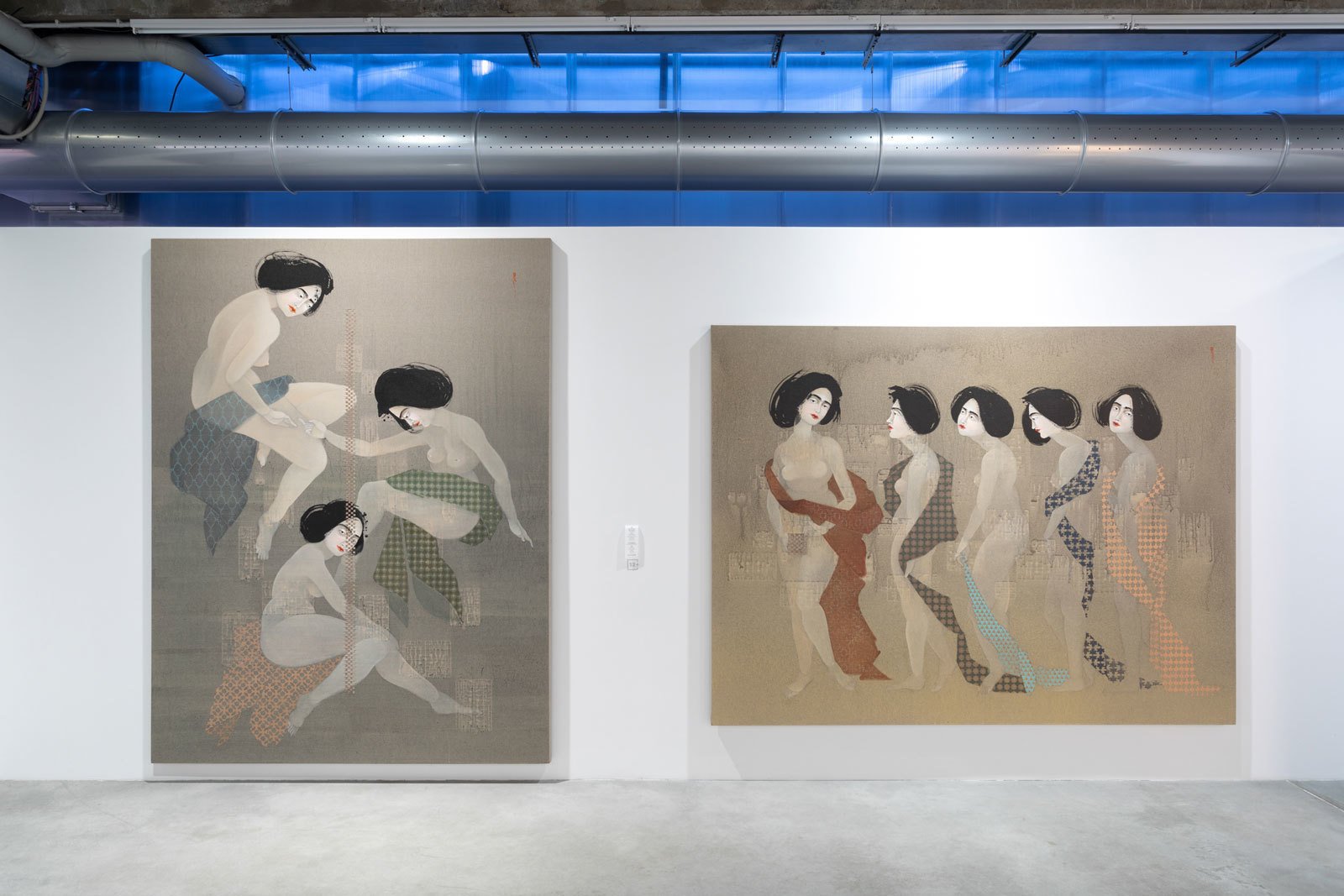Hayv Kahraman
(b. 1981, Baghdad; lives and works in Los Angeles)

Targets, 2017
Oil on linen, 185.6 x 243.7 x 5.4 cm
Courtesy Ani Arnold collection
Mnemonic Artifact 5, 2017
Oil on linen, 243.8 x 185.1 x 5.2 cm
Private collection
In her works, Hayv Kahraman addresses the themes of memory, trauma, and the search for identity. Saddam Hussein’s totalitarian regime and the intervention of the US Armed Forces during the Gulf War (1990–1991) forced the artist’s family to flee Iraq for Sweden when Hayv was eleven years old. Her works are invariably inhabited by ghostly female look-alikes, wandering in a soft canvas void. In Kahraman’s paintings, fabric and clothing operate as symbols of protest against cultural and public diktats. Firstly, they represent a mutiny against European power over the world or, to be more exact, the supremacy of the pictorial protocols of Renaissance painting. Islamic geometric ornament, which is incorporated in the depiction of the cloak, violates the two-dimensional perception of spatial forms and resists perspective, which is often considered the greatest achievement of Western visual culture. What have historically been canonical works of European art lose their uniqueness and become “provincialized” when passed through the filters of Arab miniatures, Persian painting, and Japanese woodcuts. The second point of protest is the absence of the hijab and, in general, of any clothing: a negative device abolishing the patriarchal norms of Sharia law and ultimately giving the artist control over the representation of her body. In many ways, Kahraman’s paintings resemble weaving: she cuts linen canvases, re-assembling pieces of fabric in zigzag patterns reminiscent of an Iraqi hand fan.